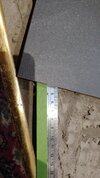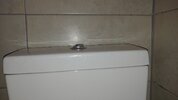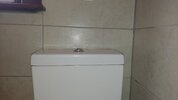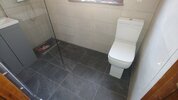- Joined
- 4 Aug 2020
- Messages
- 20
- Reaction score
- 2
- Country


Background:
My mum has a wet room that is leaking. The wet room was installed in 2019 by a builder who claimed to be a plumber. The wet room is located on the second floor of a circa 1930s terrace house.
Due to budget constraints, my mum opted to get the company to replace the floor and tiles only.
The builder replaced the previous boards with 18mm ply, added extra noggins between the joists and used a decoupling membrane (Ditra Mat). He also suggested using a shower tray in the wet area. The tiles are large format porcelain.
Mid-Project Concerns:
Last weekend, I inspected the work he had performed so far and had the following initial concerns:
- The DITRA Mat did not extend to the wall, where there should be a 1/2-inch gap to allow for expansion.
- There was a lack of flexible jointing tape (e.g. Kerdi Band) for waterproofing expansion joints (wall meets ceiling).
- The contractor used a plasterer's trowel to apply thinset, rather than an appropriate sized notched trowel. This resulted in the thinset mortar not being applied evenly.
- There were visible gaps underneath some of the tiles that had been laid.
Current Issue: Sloping Floor
The installer is coming back later today to connect new taps and a toilet to the water supply and finish up.
However, I can see that the floor is sloping significantly (toilet is at the wall opposite where the shower drain is situated!!).
Questions:
Is there a general rule concerning the sloping of the floor in a wet room?
What methods are viable to ensure that the tiles at the toilet end are at least flat?area at least is flat, (shims, etc)
Thank you for your time.
Attachments
Last edited:




